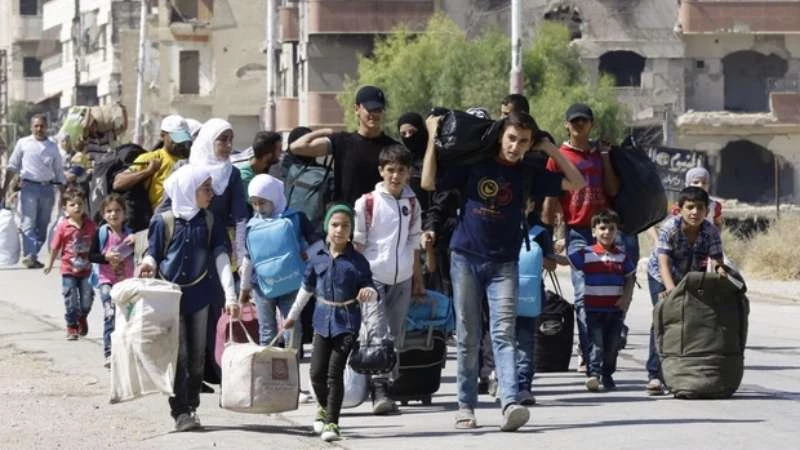The threat which was uttered in the presence of the head of the regime simply meant reducing Syria’s population to 6 million people through systematic annihilation and displacement or even forcing people to immigrate and leave their homeland behind.
For many pessimists, the threat of Assad was then an act of displaying power or at best a kind of wishful thinking; however, after five and a half years of implementing “Assad or we burn out the country” policy, the regime’s threat, unfortunately, became true under the sight of the international community and the UN which couldn’t move a nerve towards a clear ethnic cleansing policy that has drained Syria from its people.
Yet, the current dangerous situation has gone beyond just emptying the country from its own people to create the so-called “Useful Syria”; it has rather extended to produce new and far-reaching demographic realities.
These new realities began in Homs when the people of Baba Amr and al-Qusayr were forced to leave their devastated towns. The targeting and destruction of those areas appeared to have been intended to not only punish the communities supporting the revolution but also to cleanse them of all ‘unwanted elements’ and prevent them from returning home in the future.
The result is changing both the political alliances and the demographic composition of those areas. Recently, the same scenario is intended to be repeated in the besieged al-Waer neighborhood in Homs which was targeted by napalm bombs resulted in killing dozens of people, including children.
Moving southward to Damascus countryside, Assad forces backed by Hezbollah militias returned to the outskirts of Damascus and managed to take over opposition areas in al-Zabadani and forced its people to move to Idlib in an exchange deal with pro-regime areas in Kefraya and Fua.
Apparently, the demographic profile of Damascus, Homs and Aleppo are being changed dramatically to create a new demographic and political reality that not only suits Assad regime but its main ally, Iran, which is planning to expel the Sunnis and destroy the Syrian mosques of historical importance to them, while reinforcing the religious edifices of the Shiites.
The regime’s ethnic-cleansing policy also included the Palestinians in Syria, as they are primarily Sunnis. The regime is systematically destroying the refugee camps in Syria as one way to “cause Sunni demographic change.”
In this context we can view moving the people of Darayya after 4 yearlong of Assad regime siege and bombardment with barrel bombs, but the most striking part in Darayya’s story is that the evacuation of its remaining people was overseen by both the UN and the Red Crescent while Afghani, Iranian and Pakistani Shia militias were around in the area.
As a conclusion, Assad regime has no intention to allow the refugees or the displaced to return to their areas, as also evident in its plan to issue new identity cards to Syrian citizens and thereby invalidate the refugees’ citizenship. For sure, aborting this twisted and sick ethnic cleansing policy needs Syrians to be united more than any time before to face this grievous challenge that targets the integrity and unity of their country which proved through history that it could successfully win over all invaders and their malicious plots.



التعليقات (0)